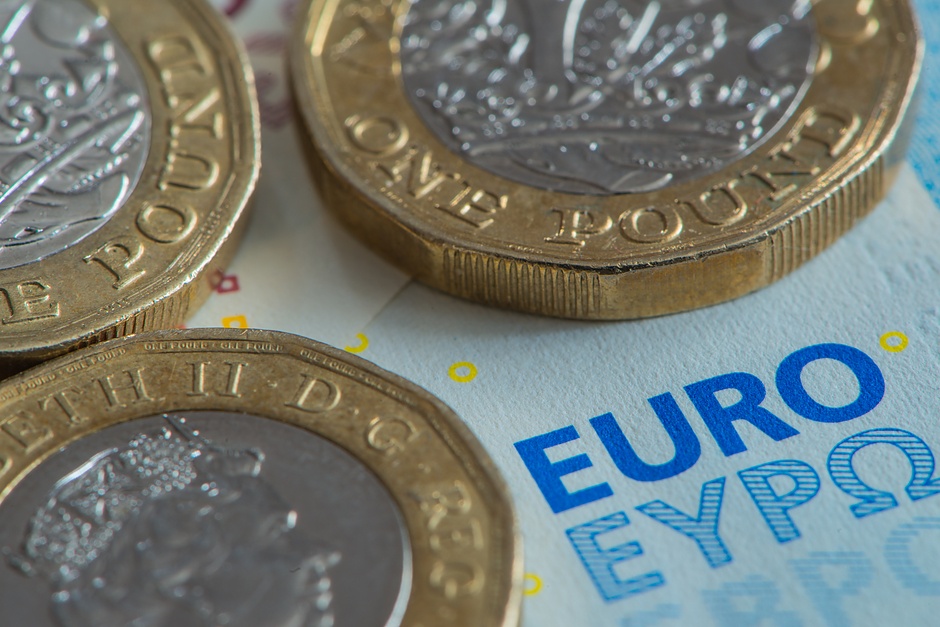EUR/GBP strengthens above 0.8550 as UK CPI inflation rises less than expected
- EUR/GBP gathers gains ground near 0.8570 in Wednesday’s early European session.
- The UK annual CPI increased 2.2% in July vs. 2.3% expected.
- Investors will keep an eye on the Eurozone Q2 GDP data on Wednesday.

The EUR/GBP cross edges higher to near 0.8570 during the early European session on Wednesday. The British Pound (GBP) loses traction after the UK Consumer Price Index (CPI) inflation data for July came in below economists' expectations. Investors await the Eurozone Gross Domestic Product (GDP) for the second quarter (Q2), which is due later in the day.
Data released by the Office for National Statistics showed on Wednesday that the UK CPI rose 2.2% YoY in July, accelerating from the 2.0% in June. Still, this figure was below the market consensus of 2.3%. Meanwhile, the core CPI, excluding volatile food and energy items, climbed 3.3% YoY in July versus 3.5% prior, below the forecast of 3.4%. The softer UK CPI inflation report exerts some selling pressure on the Pound Sterling as it has triggered the expectation of an interest-rate cut by the Bank of England (BoE) in September.
On Thursday, traders will shift their attention to the UK Gross Domestic Product (GDP) for the second quarter (Q2), which is projected to expand 1.0% year-on-year. On a quarterly basis, the GDP number is forecasted to grow 0.6% in Q2.
On the Euro front, the Eurozone Gross Domestic Product (GDP) for the second quarter (Q2) will be published. The Eurozone economy is estimated to grow 0.3% QoQ and 0.6% YoY in Q2. A weaker-than-expected GDP growth numbers could weigh on the Euro (EUR) and cap the upside for EUR/GBP.
(This story was corrected on August 8 at 08:00 GMT to say, in the title, that UK inflation rose less than expected, not eased. It was also corrected to say, in the second paragraph, that the next BoE meeting will be in September, not August. It was also corrected to say, in the last paragraph, that a weaker Euro could cap the upside potential for the EUR/GBP pair, not its downside.)
Inflation FAQs
Inflation measures the rise in the price of a representative basket of goods and services. Headline inflation is usually expressed as a percentage change on a month-on-month (MoM) and year-on-year (YoY) basis. Core inflation excludes more volatile elements such as food and fuel which can fluctuate because of geopolitical and seasonal factors. Core inflation is the figure economists focus on and is the level targeted by central banks, which are mandated to keep inflation at a manageable level, usually around 2%.
The Consumer Price Index (CPI) measures the change in prices of a basket of goods and services over a period of time. It is usually expressed as a percentage change on a month-on-month (MoM) and year-on-year (YoY) basis. Core CPI is the figure targeted by central banks as it excludes volatile food and fuel inputs. When Core CPI rises above 2% it usually results in higher interest rates and vice versa when it falls below 2%. Since higher interest rates are positive for a currency, higher inflation usually results in a stronger currency. The opposite is true when inflation falls.
Although it may seem counter-intuitive, high inflation in a country pushes up the value of its currency and vice versa for lower inflation. This is because the central bank will normally raise interest rates to combat the higher inflation, which attract more global capital inflows from investors looking for a lucrative place to park their money.
Formerly, Gold was the asset investors turned to in times of high inflation because it preserved its value, and whilst investors will often still buy Gold for its safe-haven properties in times of extreme market turmoil, this is not the case most of the time. This is because when inflation is high, central banks will put up interest rates to combat it. Higher interest rates are negative for Gold because they increase the opportunity-cost of holding Gold vis-a-vis an interest-bearing asset or placing the money in a cash deposit account. On the flipside, lower inflation tends to be positive for Gold as it brings interest rates down, making the bright metal a more viable investment alternative.
Author

Lallalit Srijandorn
FXStreet
Lallalit Srijandorn is a Parisian at heart. She has lived in France since 2019 and now becomes a digital entrepreneur based in Paris and Bangkok.

















